Long knife - WII (AB)
Back to exhibition - Back
to periods
Information
Long knife - WII
Copy of medieval seax-formed dagger from Denmark. The shape suggests
that it is used for stabbing and cutting. The seax is known from the
400's; the blade is always single-edged, but the shape changes over
time.
In the Middle Ages, a seax is often used as a secondary weapon to
another weapon. Depending on the shape, a seax is used as a long knife
or as a cutlass. The seax develops, in the early Middle Ages, into
a single-edged sword called a "long seax", from there on
to other kinds of single-edged swords and cutlass weapons.
(Wheeler type: Blade 2).
Sources
Long knife - WII 01 (A)
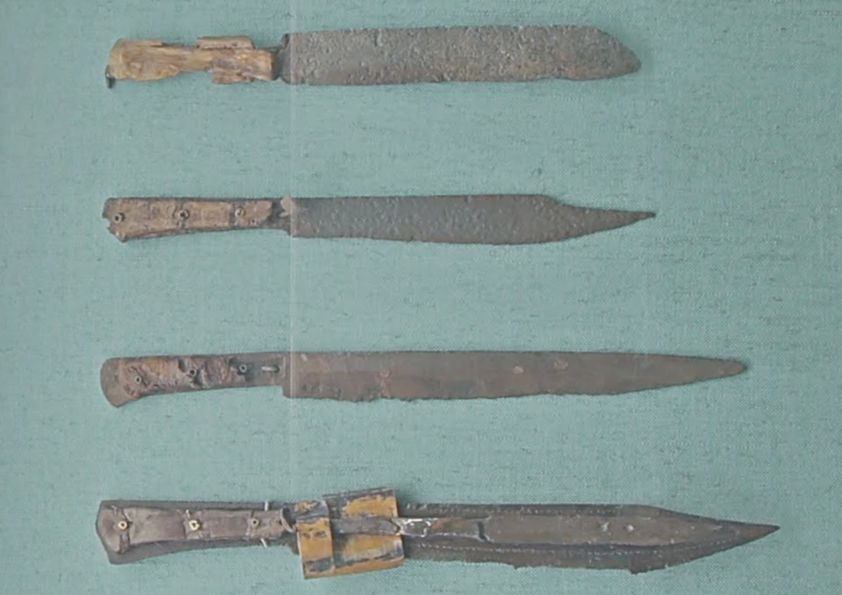
Source type (A):
Archaeological object.
Current location:
Nationalmuseet, Copenhagen Denmark.
Place of origin:
Denmark.
Dating:
Medieval.
Note:
No. three from above.
Long knife / Seax - WII 02 (B)
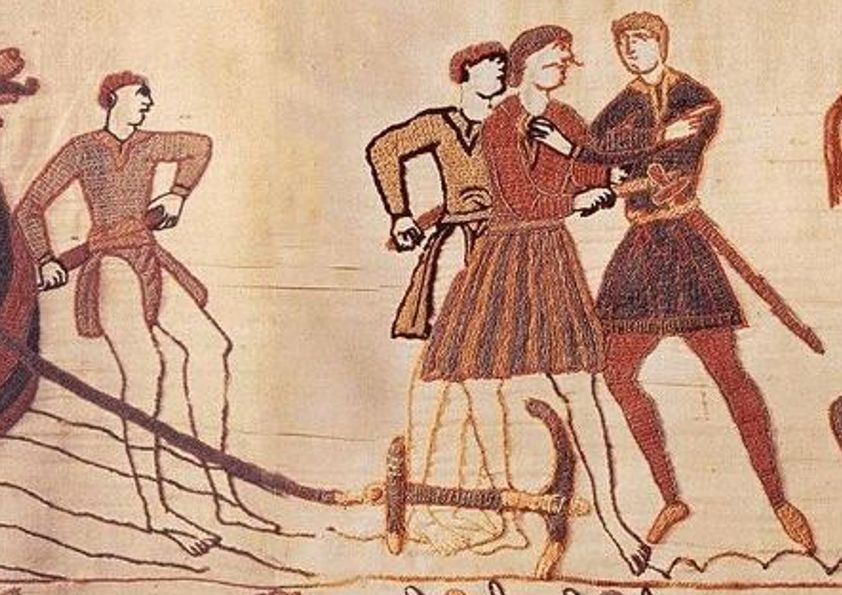
Source type (B):
Embroidered tapestry.
Navn:
Bayeux tapestry.
Author:
Possibly made by order of Bishop Odo of Bayeux.
Current location:
Cathédrale Notre-Dame de Bayeux, Bayeux, Frankrig.
Place of origin:
Possibly made in England.
Dating:
After 1070.
Note:
Battle of Hastings in 1066.
Long knife / Seax - WII 03 (B)
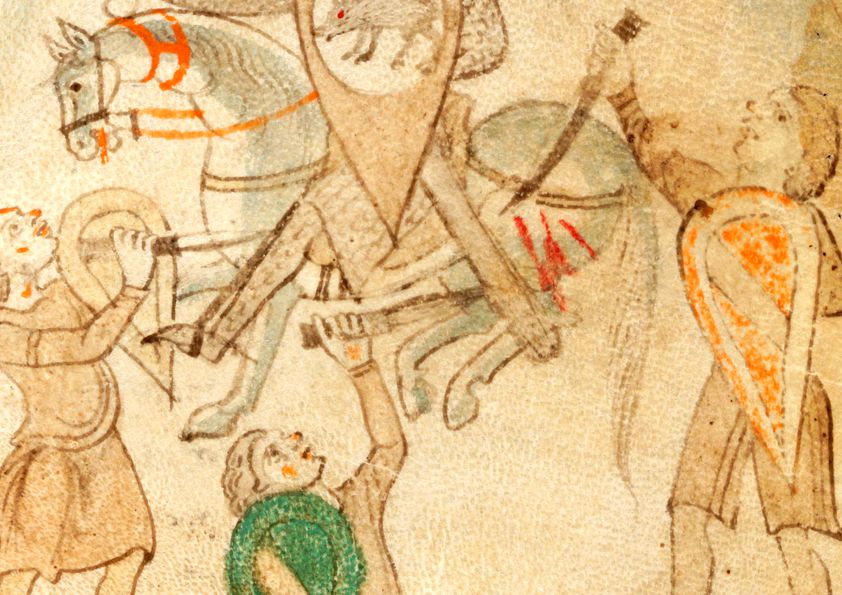
Source type (B):
Manuscript.
Name:
Liber ad honorem Augusti Liber ad honorem Augusti sive de rebus Siculis.
Author:
Petrus de Ebulo.
Current location:
Burgerbibliothek, Bern, Switzerland (Cod. 120.II - f.130r).
Place of origin:
Southern Italy.
Dating:
1195-1197.
More sources
Long knife / Seax - WII 04 (B)
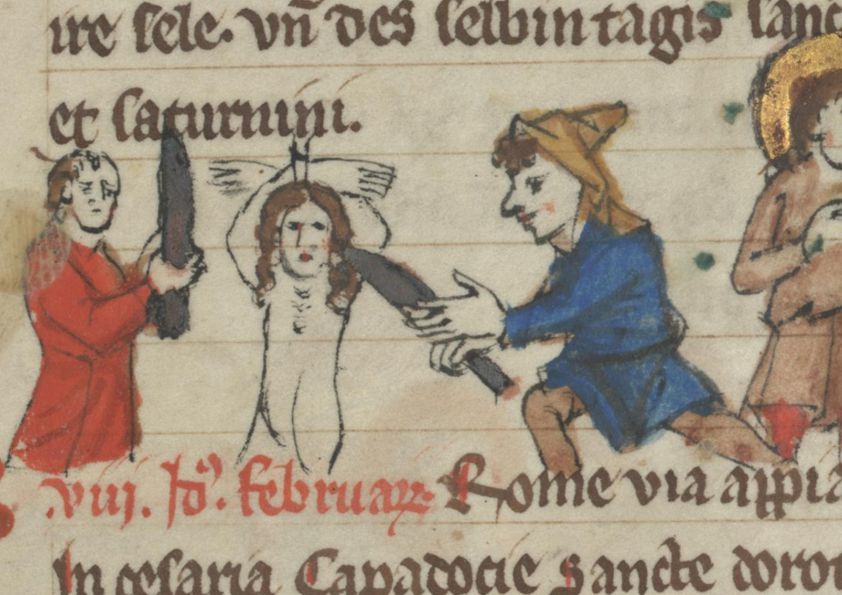
Source type (B):
Manuscript.
Name:
Jena martyrologi.
Author:
-
Current location:
Thüringer Universitäts- und Landesbibliothek Jena, Thüringen,
Germany (Ms. Bos. q. 3 - f.13r).
Place of origin:
Thüringen, Germany.
Datering:
Ca. 1275.
Long knife / Seax - 05 (B)
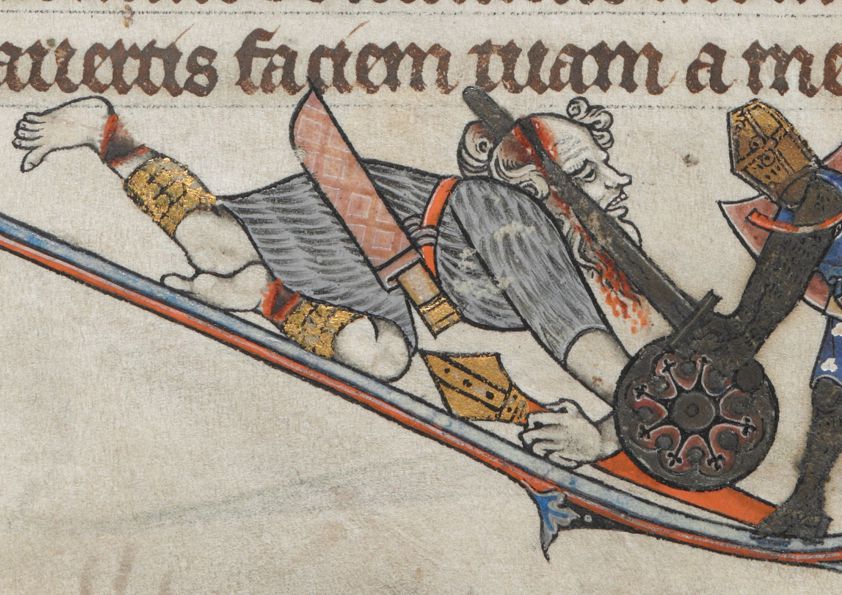
Source type (B):
Manuscript.
Name:
The Alphonso Psalter (Tenison Psalter).
Author:
-
Current location:
Brithish Library, London, U.K. (Add MS 49622 - f.17r).
Place of origin:
England.
Dating:
Ca. 1284-1316.
Note:
The first half of the manuscript from which this illustration originates,
dates back to 1284.
Back to exhibition
Back to periods
Back to front page
www.korsfarerne.dk
|




